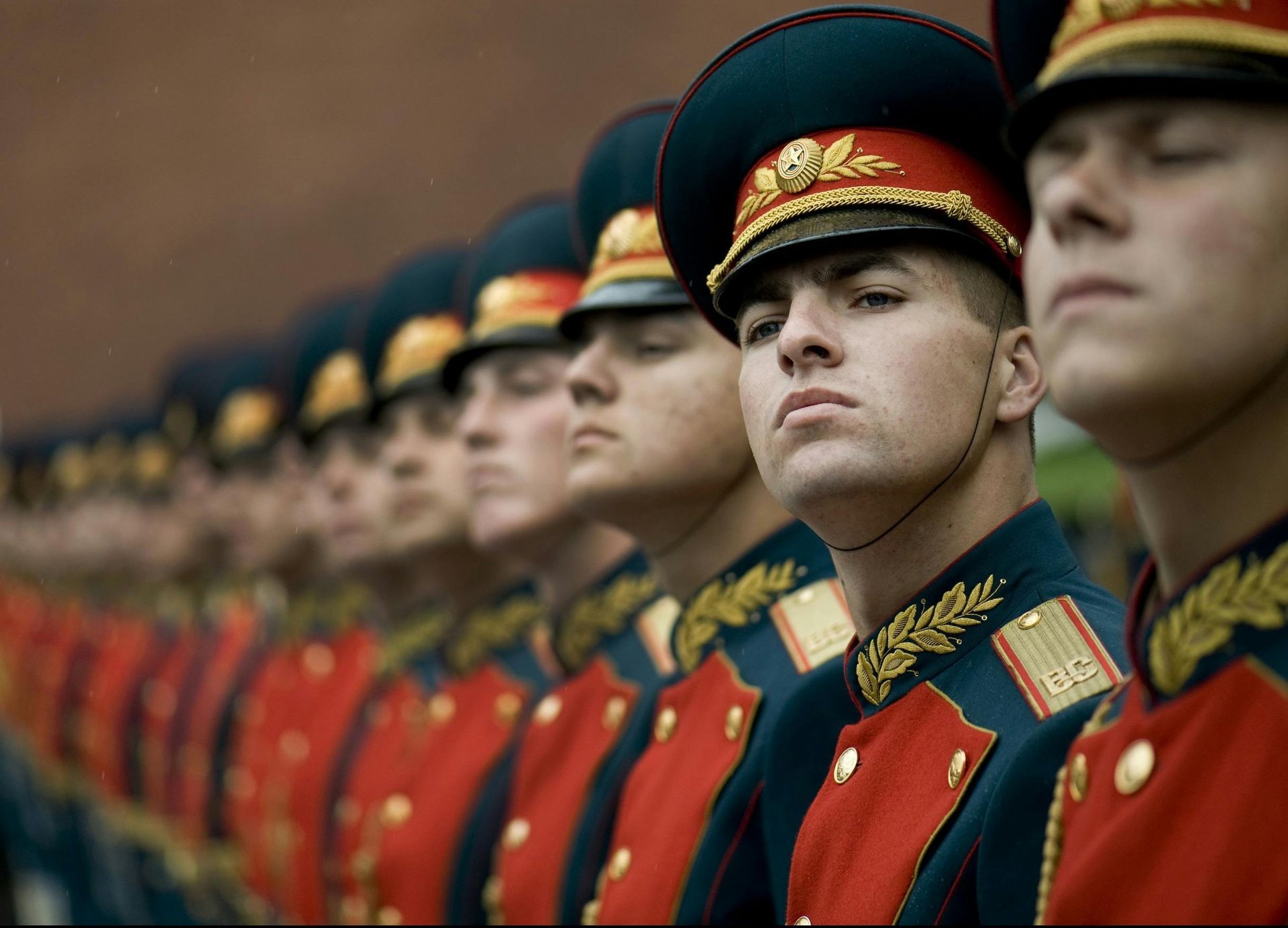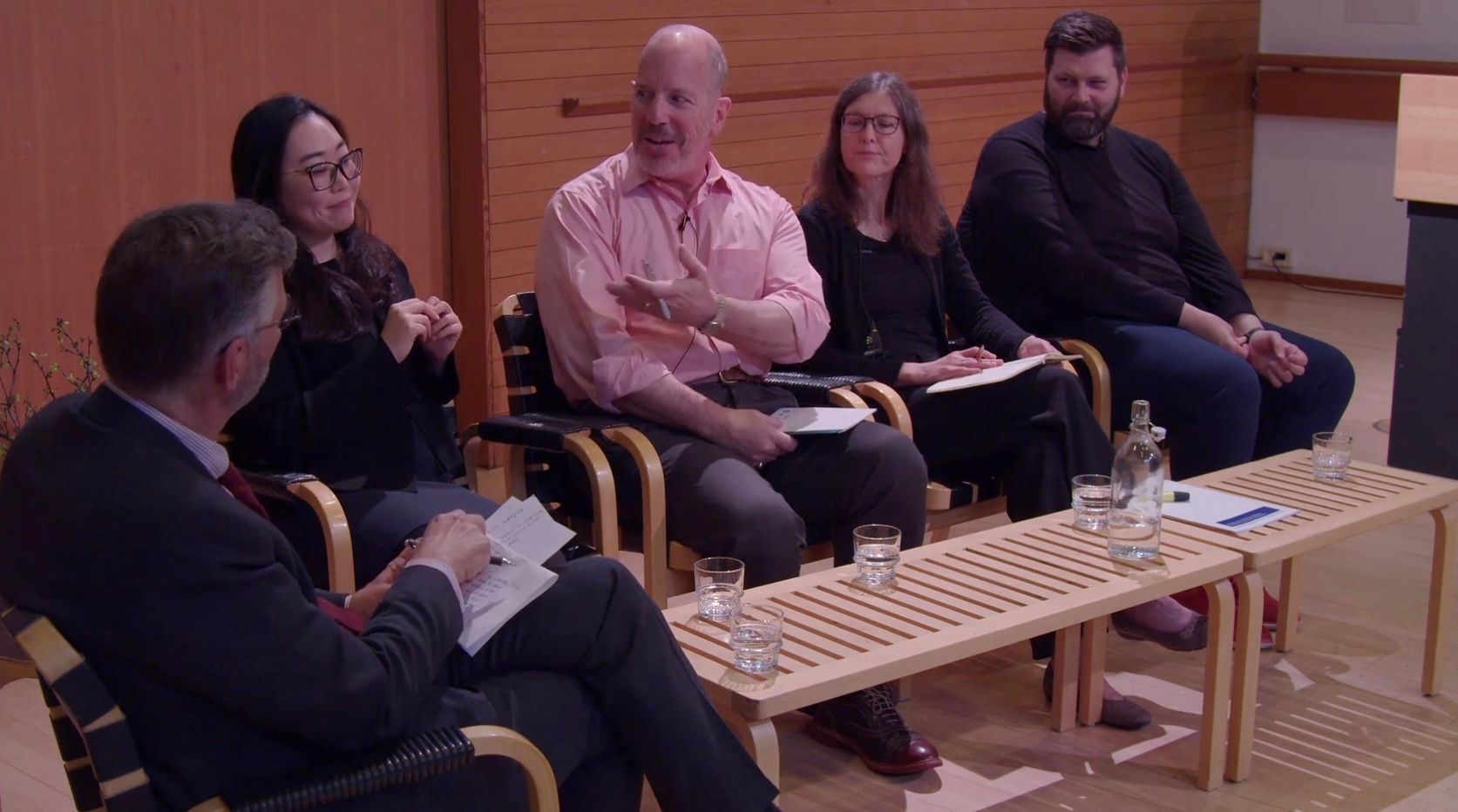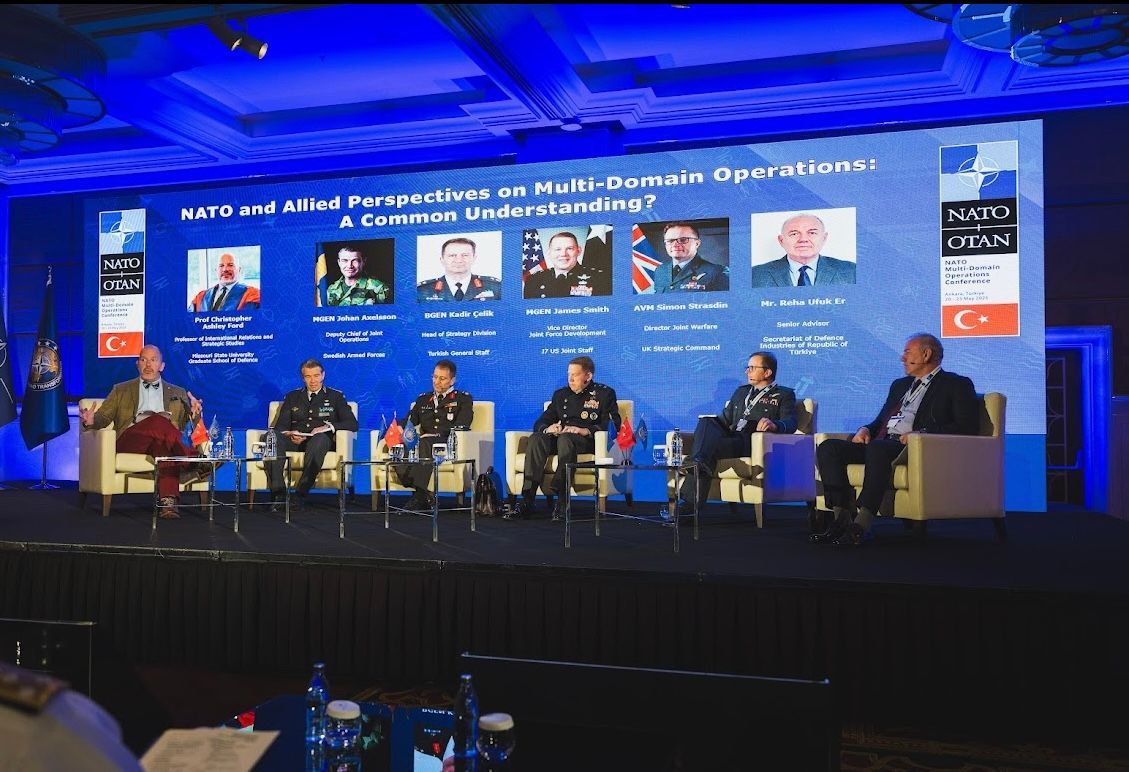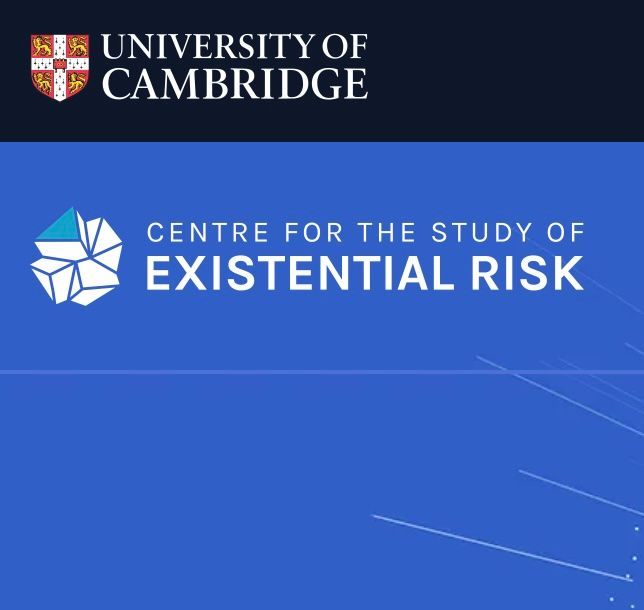Lessons From Disarmament History for the CEND Initiative
Note:
Below are the remarks Assistant Secretary Ford delivered on April 30, 2019, at the United Nations in New York, at a side event for the Third Session of the Preparatory Committee for the 2020 Review Conference of the Parties to the Treaty on the Non-Proliferation of Nuclear Weapons. These remarks may also be found on the website of the U.S. State Department's Bureau of International Security and Nonproliferation.
Excellencies, ladies and gentlemen, thank you for coming — and thank you also to Ambassador Patriota of Brazil and Ambassador Gabrielse of the Netherlands for joining me for another discussion of the “Creating an Environment for Nuclear Disarmament” (CEND) initiative. The event we did together in March at the Conference on Disarmament in Geneva was, to my eye, quite successful, and it is a pleasure to be back on a panel with the two of you.
I should also offer special thanks to Under Secretary Thompson, for all her leadership and support in this important initiative. Without her, there would be no CEND initiative, and rather than being in the process of adapting itself creatively to modern needs and challenges, the world’s disarmament discourse would remain dangerously stuck in outdated and sterile concepts that actually impede progress toward its objectives.
For my contribution today, I thought I’d offer thoughts on some lessons that can be drawn from disarmament history to inform the CEND dialogue that lies ahead of us as we bring the “Creating an Environment Working Group” (CEWG) into being in anticipation of its first plenary meeting this summer. These lessons, I think, help make clear why we so badly need a new dialogue focused upon ameliorating the security conditions that impede disarmament progress. After that, I’ll say a few words about the suggestions made — in our just-released NPT Preparatory Committee (PrepCom) working paper on operationalizing CEND — about the sorts of questions we hope the Working Group will be able to start exploring as it seeks to find a way forward for us all.
I. Lessons to Remember
So first, some historical perspective. When we emphasize the degree to which the CEND initiative learns lessons from the past about how it is futile — and can be counterproductive — to try to address disarmament issues without considering the underlying circumstances of the security environment in which disarmament-related decisions take place, we are not just making idle assumptions. This point about security conditions is one that resonates throughout the history of mankind’s efforts to limit or eliminate dangerous weapons of war.
A. ANCIENT CHINA
The earliest disarmament campaign of which I am aware apparently dates from sometime around 546 B.C.E., during the “Spring and Autumn” period of ancient Chinese history — at which point a statesman from the state of Ho Nan decided to make a name for himself by enlisting his diplomatic counterparts in an agreement to stop producing armaments. In the campaign of moral suasion to win support for this pact, several other states agreed to sign up, each convinced that the effort would come to nothing, but all nonetheless afraid of the reputational harm that might result from being seen to be opposed to such a deal.
Perhaps not surprisingly, under the circumstances, these states’ solemn pronouncement proved only fleetingly effective, if at all. Made in a vacuum apparently disconnected from the competitive dynamics of the period and enforced merely by fear of reputational harm among the bien-pensant diplomatic community of the period, this virtue-signaling seems not to have affected the deterioration of competitive statecraft that followed – ultimately leading to a progression of warfare in the Warring States period in which successive states were gradually swallowed up until the brutal and totalitarian State of Qin emerged triumphant in 221 B.C.E. under Qin Shi Huang, the first Emperor of China and the founder of the eponymous Qin Dynasty that gave China its name.
B. MEDIEVAL EUROPE
In 1139, Pope Innocent II issued a papal encyclical, at the Second Lateran Council, that among other things made an attempt at prohibitory disarmament. The 29th canon of his encyclical declared to the warring princes of Christendom that in their feuding, it was now prohibited to engage in what Innocent described as “that murderous art of crossbowmen and archers, which is hateful to God.” This ban was to be enforced by penalty of anathema — that is, the formal ecclesiastical curse of excommunication, which was about as terrible a punishment as the Medieval Christian mind could devise.
Whether the motives behind this prohibition were in fact moral — perhaps representing Europe’s first “humanitarian impact” disarmament campaign — or whether the Pope was simply trying to lock in place the existing power structure by banning technologies that might threaten a status quo in which well-armored nobles need not fear commoners, the encyclical was notably ineffective. Both crossbows and archers remained important parts of European warfare for centuries, only being phased out when superseded by firearms. This may have been the first time in Western history that a moralistic prohibition issued without any apparent consideration of or attempt to ameliorate the brutal security dynamics of its time ended in embarrassing failure, but it would not be the last.
C. THE INTERWAR YEARS
Many of you probably know of the Kellogg-Briand Pact of 1928 — a global effort originally devised by well-intentioned disarmament advocates from the Carnegie Endowment for International Peace, and under which 62 countries eventually signed a solemn agreement declaring war itself to be unlawful — and of its tragic ineffectiveness in mankind’s march toward the Second World War. Perhaps less well remembered today, however, are the efforts at naval arms limitation undertaken in the 1920s and 1930s. Nevertheless, these efforts also provide some lessons about the challenges of trying to limit or prohibit specific means of destruction without addressing the circumstances that lead real-world leaders to want them or to keep them.
In the wake of the carnage of the First World War, a number of U.S. politicians, including Senator William Borah of Idaho, led an effort to get the United States to begin arms limitation and disarmament negotiations with its British and Japanese competitors in the worldwide naval arms race that was then starting to heat up. This campaign of disarmament activism helped lead to the Washington Naval Conference of 1921, as well as to several successive follow-up conferences in the late 1920s and early 1930s.
Some delegations viewed these conferences as an opportunity to try to address growing security problems in the postwar environment, perhaps most of all in the Far East, where the rising, geopolitically revisionist empire of Japan was destabilizing things rapidly. The American delegation sent by President Warren Harding to the Washington Naval Conference, however, focused almost entirely upon regulating weapons themselves, by setting specific limits on naval armaments.
This emphasis upon controlling the tools rather than ameliorating the security environment continued for years, with the result that the successive interwar naval conferences have been described as “a monument to the futility of seeking arms control without connecting political arrangements.” The U.S. statesmen who constructed the “Washington system” of arms limits during this period succeeded in building a complex system of numerical controls based upon ship and tonnage ratios between the rival powers, but they failed to pay much attention to countries’ broader geopolitical interactions and the security dynamics of the interwar period. In effect, arms control became the goal in and of itself, instead of playing its proper role as merely a means — and one among others — to improve international security. Accordingly, their technical mechanisms proved short-lived, soon being overtaken and left behind by advances in naval and aviation technology and by worsening great power competitive dynamics in the lead-up to the Second World War.
D. COLD WAR AND POST-COLD WAR EFFORTS
A more salutary example of the importance of underlying security conditions can be found in the form of the Intermediate-range Nuclear Forces (INF) Treaty of 1987 — an agreement that took advantage of a disarmament opportunity created by armament choices made by Western leaders who responded to Soviet missile threats with steady resolve notwithstanding a firestorm of political opposition from the disarmament community. I am sure most of you know this story.
The Soviet Union deployed its RSD-10 intermediate-range missile — known to NATO as the SS-20 Saber — in considerable numbers in the 1970s, presenting NATO with a grave new threat to which the Alliance then had no response. NATO leaders, however, agreed to meet this threat by accepting the United States’ development and deployment in Europe of nuclear-tipped Pershing II ballistic missiles and Gryphon ground-launched cruise missiles (GLCMs). Despite fierce opposition from a “nuclear freeze” movement strongly encouraged from Moscow — since a freeze would have left Soviet missiles in place unopposed, and since the USSR’s totalitarian political system was essentially immune to civil society disarmament protest anyway — NATO stayed the course, and the new U.S. systems began to be deployed in the early 1980s.
Far from this representing just another potentially catastrophic escalation in the Cold War nuclear arms race, however, the U.S. deployments gave the Soviet Union a powerful reason to reconsider its course. In 1987, the two powers agreed to the INF Treaty, the first arms control agreement ever to eliminate an entire class of nuclear delivery systems.
As we all know, of course, Russia would decide to violate this treaty less than a quarter century later, setting in motion a chain of events that will likely produce INF’s collapse in the next few months. Nevertheless, that treaty’s success in ridding the nuclear superpowers of INF-class weapons for a generation provides an important lesson. It shows that the path to disarmament can sometimes run through strength — specifically, a steely-eyed responsiveness to threats, coupled with an open-minded willingness to negotiate when geopolitical conditions have been created that make success possible — even when the conventional wisdom of the disarmament community holds otherwise.
I will not dwell upon the example of START and the nuclear weapons reductions that occurred after the end of the Cold War, because I speak of them often — and you are all surely well aware that that period of eased tensions allowed us to reduce the size of the U.S. nuclear arsenal by an extraordinary 88 percent from its Cold War peak. I mention this now only briefly, simply in order to stress the obvious lesson it teaches. This disarmament progress did not end the Cold War, but rather followed and resulted from the easing of Cold War tensions.
These various historical lessons make clear that disarmament is possible only when and to the degree that the underlying security conditions of the global environment are, or can be made, conducive to such progress. To start with trying to prohibit the tools without working on the security environment is thus to get things precisely backwards — and probably also to doom one’s efforts to failure, however well-intentioned they may be.
E. MAINTAINING A DISARMAMENT REGIME
Before I outline what these lessons might mean as we think about a constructive agenda for the CEND initiative, let me add a final lesson about the challenges of maintaining disarmament. The international community now has at least a little experience with trying to build and maintain a comprehensive disarmament regime, in the form of the Chemical Weapons Convention (CWC) and its associated Organization for the Prohibition of Chemical Weapons (OPCW). Accordingly, we should learn from this example too.
Let me try to explain why I think the CWC is so relevant here. At one level of abstraction, a disarmament regime could be thought of as involving three prongs: prohibition; elimination; and verification. The CWC is ambitious in this regard. By contrast to the other WMD control regimes, it seeks to accomplish all three of these things. It bans chemical weapons (CW) and lays out a process for eliminating CW stocks and facilities. It establishes mechanisms for verifying implementation, monitoring for signs of cheating, and investigating allegations of use, and it now also even provides a means for attributing instances of CW use in Syria.
The CWC on the whole has been fairly successful. This makes its example an important one as we think about the disarmament future.
But the CWC regime faces great challenges at present, with Syria and Russia having both not just kept but in fact used chemical weapons in violation of the CWC. Iran, too, does not appear to have complied with its own CWC obligations, and may be pursuing central nervous system-acting chemicals for offensive purposes. Meanwhile, Russia has been working to sabotage and undermine mechanisms for CW-related transparency and accountability at both the United Nations and the OPCW.
The lesson here, I would suggest, is not just that one does not get to disarmament without careful attention to ensuring that the underlying conditions of the security environment are conducive to it, though that is clearly true. It is also the case that one cannot maintain a disarmament regime irrespective of the security environment. Regimes do not maintain themselves, after all, and preserving them requires ongoing work and commitment from all involved.
If unscrupulous Parties feel they have something to gain from noncompliance — and if they either think they won’t be caught or simply see no particular reason to fear the consequences if they are — a regime will erode. In a sense, therefore, whether with respect to “getting there” or to “staying there,” a serious disarmament agenda can be seen as a task more effectively and sustainably undertaken by practitioners of realpolitik than by mere moralists.
Here too, then, history shows the prospects for disarmament to be inescapably entangled with, and inseparable from, the problems of the security environment. No viable disarmament agenda can proceed without trying to address those challenges, and the most serious ones start there. And that, in turn, brings us to CEND.
II. Questions to Consider
CEND is all but unique among disarmament efforts in the modern world, in that it is alive to and informed by these security challenges. In the PrepCom Working Paper we have just released on operationalizing CEND and setting in motion the CEWG, we include a section suggesting how we believe it might be helpful for the Working Group — when it meets this summer in its first plenary session — to focus upon key questions and factors that affect the international community’s ability to achieve further nuclear disarmament progress or that will have to be addressed in connection with achieving and maintaining the ultimate goal of elimination.
As I noted in my remarks to the PrepCom General Debate, it will be up the CEWG itself to decide what specific questions it will actually end up exploring. As we describe in our Working Paper, however, we suggest the possibility of approaching these challenges in three broad, conceptual “buckets.”
First, we suggest an exploration of measures that could help change the security environment in order to reduce incentives for states to retain, acquire, or increase their holdings of nuclear weapons.
- What incentives, for example, underlie decisions to acquire delivery systems that could be destabilizing, and how could these incentives be lessened?
- What can be done to lessen the challenges presented by regional tensions and conflicts that can lead countries to conclude that their security requires nuclear weapons and delivery systems?
- What can be done to shore up regimes prohibiting chemical and biological weapons the possession and spread of which could create deterrence challenges affecting nuclear disarmament prospects?
- How should the international community deal with emerging non-nuclear technology threats that could have strategic impact?
- And how would a disarmament regime deal with the challenge of “latent” nuclear weapons programs and possible reconstitution?
Since it seems unlikely that anyone will ever be able entirely to eliminate the materials and know-how needed to make at least basic nuclear weapons, exploring such questions is critical to the disarmament enterprise.
Second, we suggest exploring institutions and processes that could bolster nonproliferation efforts and increase confidence in nuclear disarmament.
- What sorts of initiatives, for instance, could promote and maintain a security environment increasingly conducive to disarmament progress?
- How can we improve compliance enforcement, so as to increase trust in arms control, nonproliferation, and disarmament agreements and commitments?
- And how would a disarmament regime handle the challenge of indefinitely maintaining robust and effective nonproliferation controls in face of declining or asymmetric knowledge about weapons?
The questions in this second “bucket” of challenges speak, in part, to the degree to which the international community can rely upon negotiated regimes to preserve peace and security in a future world free of nuclear weapons. Especially in an era of compliance crises such as with the D.P.R.K.’s violation of the NPT, Russia’s material breach of the INF Treaty, Syrian and Russian CWC violations, and still-unresolved questions about Iran’s nuclear capabilities and strategic intent, these questions are quite critical.
Third, and finally, we suggest exploring measures to reduce the likelihood of nuclear war among weapons possessors during whatever period of time remains before such weapons are eliminated.
- How can countries, for example, improve transparency and mutual understanding on nuclear weapons concepts, doctrines, postures, policies, and threat perceptions?
- And what steps can be taken to minimize nuclear risks – including through improvements in crisis communications and transparency, and means to reduce accident risks, prevent loss of control, or inadvertent or unauthorized use of nuclear weapons?
This third “bucket” of questions points us at the need to maintain nuclear deterrence wisely during whatever period remains before the possible future achievement of disarmament. Since it is possible that this might end up being quite a long time, it is imperative that we think more carefully and systematically about these challenges.
III. Conclusion
I know that we have given you a lot to digest, but we are very pleased to have the chance to discuss these matters and provide you all with “food for thought” as we move — after the conclusion of this PrepCom — into the planning process for this summer’s upcoming CEWG plenary. We do not claim to have all the answers, of course, nor would it be appropriate for any one country to dictate the agenda for such a collaborative dialogue project. Nonetheless, we hope that the international community is now finally at a point where it can start asking itself the right questions, and we look forward to working with our international partners in the upcoming plenary to devise a constructive approach.
Thank you for coming.
-- Christopher Ford








